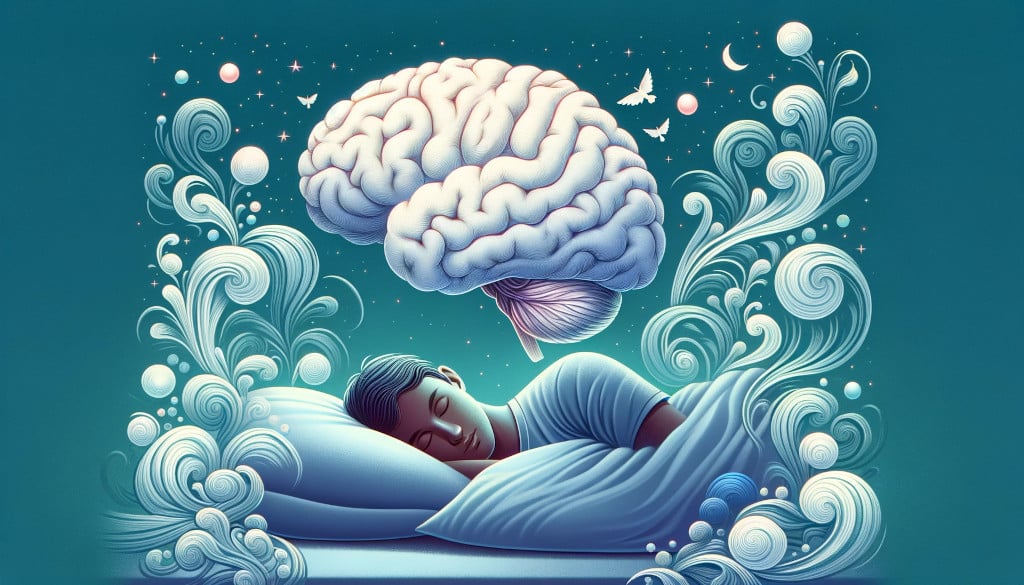Last Updated on August 23, 2025 by Max
Introduction
Erectile dysfunction (ED) is a common and often misunderstood condition that affects millions of men worldwide. The inability to achieve or maintain an erection can profoundly impact one’s self-esteem, relationships, and overall well-being. Despite its prevalence, many individuals grappling with ED feel isolated and unsure of how to address their concerns. This blog post aims to shed light on the real-life experiences of those who have successfully navigated the challenges of ED, emphasizing the importance of seeking help and exploring various treatment options. Read on to discover how these individuals triumphed over adversity and reclaimed their confidence, intimacy, and quality of life. By sharing these inspiring stories, we aim to foster a sense of hope, understanding, and solidarity for anyone dealing with this sensitive issue.
- Introduction
- Story 1: A Journey to Wellness – Overcoming ED through Lifestyle Changes and a Supportive Partner
- Story 2: Finding Hope in Medical Treatments: Research-backed Solutions for Rebuilding Love
- Guidelines for PDE5 inhibitors use
- Story 3: The Mind-Body Connection: A Deeper Dive into Addressing Psychological Factors and Overcoming ED
- Story 4: Embracing Alternative Therapies for ED Management and Lasting Results
- Improved Sexual Function and Overall Well-being
- Key Takeaways – Unraveling the Complexities of Overcoming Erectile Dysfunction
- Conclusion
- References
Story 1: A Journey to Wellness – Overcoming ED through Lifestyle Changes and a Supportive Partner

John, a 45-year-old accountant from Chicago, had always been a hard worker. But as the stress from his job piled up, so did the impact on his health and personal life. He began struggling with erectile dysfunction (ED), an issue that strained his relationship with his wife, Sarah. John felt lost and defeated, but Sarah refused to let this challenge tear them apart.
One day, John stumbled upon some research highlighting the benefits of a healthy lifestyle for men with ED. John saw hope as he read about the positive effects of regular exercise, stress management, and a nutritious diet.
Lifestyle Changes
With Sarah’s encouragement, John decided to take control of his health and seek professional help. After consulting with his doctor, John learned that his sedentary lifestyle and poor diet contributed to his ED. He decided to make significant changes to his daily routine, which included:
- Adopting a healthier diet: John focused on consuming whole, nutrient-dense foods, such as lean proteins, fruits, vegetables, and whole grains. He also reduced his intake of processed foods, sugar, and alcohol. A study published in The American Journal of Clinical Nutrition found that a diet rich in fruits, vegetables, whole grains, and fish can significantly reduce the risk of ED (Esposito et al., 2006).
This study involved 110 obese men with ED who were divided into two groups: an intervention group (lifestyle changes) and a control group (no intervention). After two years, the intervention group experienced a significant improvement in erectile function. The International Index of Erectile Function (IIEF) scores increased by 5.3 points in the intervention group, while the control group saw a decrease of 0.9 points. The study concluded that lifestyle changes, including weight loss, increased physical activity, and a healthier diet, significantly improved erectile function among obese men with ED.
- Incorporating regular exercise: John began a balanced exercise regimen that included cardiovascular activities, strength training, and flexibility exercises. He started with brisk walks and gradually progressed to more intense workouts. Research has shown that regular exercise can improve erectile function and overall health in men with ED, particularly when combined with a healthy diet (Lamina et al., 2009).
The study involved 41 hypertensive men with ED who participated in an interval exercise training program for eight weeks. After the exercise program, the participants saw a significant improvement in erectile function, with a mean increase of 6.3 points in their IIEF scores. The researchers concluded that a supervised interval exercise training program could effectively improve erectile function in hypertensive patients with ED.
- Managing stress: John practiced mindfulness techniques, such as deep breathing exercises and meditation, to better cope with work-related stress. He also consciously tried to set boundaries between his work and personal life. Stress management has been found to improve ED outcomes by addressing the psychological factors contributing to the condition (Shiri et al., 2019).
This population-based study examined the effect of lifestyle factors on the incidence of ED among 989 men aged 50-70 years. The study found that men with a higher intake of fruits and vegetables had a 30% lower risk of developing ED than men with less healthy diets. Additionally, men who exercised regularly had a 40% lower chance of ED than sedentary men. Furthermore, combining a healthy diet and regular exercise was associated with a 60% reduction in ED risk. The study concluded that maintaining a healthy lifestyle, including a balanced diet and regular exercise, can significantly reduce the risk of developing ED in middle-aged and older men.
As the weeks and months passed, John and Sarah noticed a difference. Not only was John’s erectile function improving, but their bond as a couple was growing stronger. Through open communication, empathy, and a shared commitment to better health, they faced the challenges of ED head-on, rekindling the passion and intimacy in their relationship.
John’s inspiring journey is a testament to the power of love, determination, and scientific evidence. His story shows us that with the right mindset, support, and lifestyle changes, it is possible to overcome erectile dysfunction and regain control over one’s life.
Story 2: Finding Hope in Medical Treatments: Research-backed Solutions for Rebuilding Love

Tom, a 56-year-old teacher from Atlanta, faced a difficult time when erectile dysfunction (ED) threatened to disrupt his loving relationship with his wife, Linda. Determined to find a solution, Tom consulted a urologist who prescribed a tailored treatment plan based on Tom’s medical history and the latest research findings.
| Oral medications | Based on a study published in the International Journal of Impotence Research, the urologist prescribed sildenafil, a PDE5 inhibitor, which has been shown to improve erectile function in 82% of men with ED (Rosen et al., 1999). Tom’s doctor advised him to take a 50mg dose approximately one hour before sexual activity but not more than once per day. Depending on efficacy and tolerability, the dose could be adjusted between 25mg and 100mg if needed. |
| Counseling | A study in the Journal of Sexual Medicine reported that men with ED who underwent cognitive-behavioral therapy (CBT) experienced significant improvements in sexual function (McCabe et al., 2017). Following this research, Tom and Linda attended couples therapy, where they worked through emotional challenges and learned to communicate more openly, ultimately strengthening their bond. |
| Medical devices | The urologist introduced Tom to vacuum erection devices (VEDs), which have been proven effective in achieving erections in 90% of men with ED (Dalkin & Christopher, 2007). By using a VED for 10-15 minutes per session, Tom successfully obtained and maintained erections with the help of a constriction ring. |
| Alternative treatments | For those who do not respond well to other therapies, penile implants can be a viable option. Studies have reported high satisfaction rates of around 80-90% for both men and their partners following implant surgery (Montorsi et al., 2016). Though Tom did not require an implant, the doctor informed him about this option if his ED persisted or worsened. |
Tom followed his treatment plan diligently, and as he and Linda continued couples therapy, they rediscovered their passion for each other. Tom’s journey demonstrates the power of evidence-based medical interventions and emotional support in overcoming ED and restoring intimacy.

Guidelines for PDE5 inhibitors use
PDE5 inhibitors, such as sildenafil (Viagra), tadalafil (Cialis), and vardenafil (Levitra), are commonly used medications for treating erectile dysfunction (ED). To ensure their effectiveness and minimize the risk of side effects or adaptation, it’s essential to follow some guidelines for their proper use:
- Correct dosage: Always follow your doctor’s prescribed dosage, tailored to your needs and medical history. The dosage may vary depending on the drug, age, and underlying health conditions. Consult your doctor if you feel the need to adjust your dosage.
- Proper timing: PDE5 inhibitors should be taken as needed, typically 30 minutes to an hour before sexual activity for sildenafil and vardenafil and 30 to 36 hours before sexual activity for tadalafil. Taking the medication too frequently or too close to the time of sexual activity may reduce its effectiveness or increase the risk of side effects.
- Limit frequency of use: Do not take PDE5 inhibitors more than once per day to avoid adaptation. Tadalafil has a longer duration of action, so use it no more than once every 36 hours.
- Avoid high-fat meals: Consuming a high-fat meal before taking sildenafil or vardenafil may reduce the absorption rate of the drug, decreasing its effectiveness. Taking these medications on an empty stomach or after a low-fat meal is best.
- Stay in communication with your healthcare provider: Regular check-ups and communication with your healthcare provider are essential to ensure the medication works effectively and safely. This also allows your doctor to monitor potential side effects and adjust your treatment plan if necessary.
- Healthy lifestyle: Adopting a healthy lifestyle that includes regular exercise, a balanced diet, and stress management can contribute to the effectiveness of PDE5 inhibitors and improve overall erectile function.
As for the duration of use, PDE5 inhibitors are effective and safe for long-term use. Studies have demonstrated their safety and efficacy for up to four years of continuous treatment (Brock et al., 2004).
Side effects of PDE5 inhibitors and interaction with other medications
While PDE5 inhibitors are generally considered safe and effective for treating erectile dysfunction, they can cause some side effects, such as headache, facial flushing, nasal congestion, and indigestion. More severe side effects, although rare, include sudden vision or hearing loss and priapism, a prolonged erection lasting more than 4 hours. PDE5 inhibitors can also interact with certain medications, particularly nitrates, used to treat chest pain or heart conditions. Combining PDE5 inhibitors with nitrates can cause a dangerous drop in blood pressure. It’s important to consult with a healthcare professional before starting any new medication, including PDE5 inhibitors, to ensure its safety and suitability for your specific situation.
It’s crucial to remember that PDE5 inhibitors are prescription medications, and a healthcare professional should always supervise their use. If you experience any side effects or have concerns about the medication’s effectiveness, consult your doctor for further guidance.
Story 3: The Mind-Body Connection: A Deeper Dive into Addressing Psychological Factors and Overcoming ED

James, a 38-year-old marketing executive, was married with two young children and enjoyed a successful career. Despite his seemingly perfect life, he struggled with erectile dysfunction (ED) for three years. The issue began to impact his self-confidence and strain his relationship with his wife.
Discovering the Psychological Factors Contributing to ED
After consulting with his primary care physician and trying ED medications with limited success, James decided to explore potential psychological factors contributing to his ED. He sought the help of a mental health professional specializing in sexual health.
By working with his doctor, James could identify and address the root causes of his performance anxiety. Together, they focused on several critical aspects of James’ life and thought patterns, which helped him develop the tools to manage his stress and anxiety effectively. These tools included:
- Identifying negative thoughts: James learned to recognize and challenge the negative thoughts that contributed to his performance anxiety. By identifying these thoughts, he could counter them with more positive and realistic perspectives.
- Coping strategies: James’ therapist taught him various coping strategies to manage stress and anxiety, such as deep breathing exercises, progressive muscle relaxation, and visualization techniques. By practicing these regularly, James was able to reduce his overall anxiety levels.
- Mindfulness: James’ therapist introduced him to mindfulness practices, including meditation and mindful exercises. These practices helped James become more aware of his thoughts and feelings, enabling him to respond to them more constructively.
- Communication skills: James learned to communicate his feelings and concerns more openly and honestly with his wife through therapy. This open communication allowed them to work together to address his performance anxiety and strengthen their relationship.
- Building self-confidence: James’ therapist helped him develop greater self-confidence by encouraging him to focus on his accomplishments and positive qualities. This increased self-confidence allowed him to feel more at ease in intimate situations, reducing his performance anxiety.
- Establishing a healthy lifestyle: James was encouraged to adopt a healthy lifestyle, including regular exercise, a balanced diet, and sufficient sleep. These changes improved his overall health, contributed to better stress management, and reduced anxiety.
Over time, by incorporating these tools into his life, James broke the cycle of performance anxiety and overcame his ED. This comprehensive approach to managing stress and anxiety effectively addressed the psychological factors contributing to his erectile dysfunction.
Story 4: Embracing Alternative Therapies for ED Management and Lasting Results
Background: A Life Hindered by ED
Meet Robert, a 55-year-old accountant experiencing erectile dysfunction (ED) for several years. Despite having no significant health issues, Robert’s ED persisted and negatively impacted his relationship with his partner. He tried conventional treatments, such as medications, but they either didn’t work well for him or produced undesirable side effects.
Exploring Alternative Therapies for ED Management
Looking for a solution, Robert decided to explore alternative therapies to manage his ED. With the guidance of his healthcare provider, he tried a combination of acupuncture, herbal supplements, and yoga to address his condition.
- Acupuncture: Robert underwent regular acupuncture sessions with a licensed practitioner. Studies have suggested that acupuncture may help improve blood flow and stimulate nerve function, which can be beneficial in managing ED (Cohen et al., 2011).
- Herbal supplements: Robert began taking herbal supplements, such as L-arginine, ginseng, and Tongkat Ali, under the supervision of his healthcare provider. Some research has indicated that these supplements may help improve erectile function by enhancing blood flow and stimulating the nervous system (Jang et al., 2008).
- Yoga: Robert incorporated regular yoga practice into his routine, focusing on poses that promote relaxation, stress reduction, and improved blood flow to the pelvic region. Studies have shown that yoga can help reduce stress and anxiety levels, which may contribute to better sexual function (Dhikav et al., 2017).
Improved Sexual Function and Overall Well-being
After several months of consistently practicing these alternative therapies, Robert noticed a significant improvement in his sexual function. His ED symptoms had lessened, and he felt more confident in his intimate relationship with his partner. Additionally, he experienced a boost in his overall well-being, as the yoga practice and acupuncture sessions helped him manage stress and anxiety more effectively.
Robert’s case highlights the potential benefits of alternative therapies for managing ED, particularly for individuals who have yet to succeed with conventional treatments. It is essential to consult with a healthcare professional before starting any alternative therapies to ensure they are safe and appropriate for your specific situation.
Key Takeaways – Unraveling the Complexities of Overcoming Erectile Dysfunction
Erectile dysfunction is often a complex issue with multiple contributing factors. To effectively manage and overcome ED, addressing the condition’s physical and psychological aspects is crucial. This may involve medical treatments, lifestyle changes, therapy, or a combination of these approaches. A team of professionals, such as urologists, therapists, and primary care physicians, can provide invaluable guidance and support to conquer ED. Additionally, leaning on support networks, like partners, friends, and family, can make a significant difference in managing the emotional impact of ED and fostering a positive outlook. Overcoming ED can be a challenging process that requires persistence and patience. Open communication with your partner, medical professionals, and therapists is essential for understanding your needs and working together toward a solution.
Conclusion
As we conclude this series of personal stories, testimonials, and case studies, we reiterate the significance of sharing these experiences to inspire and encourage others facing similar challenges with erectile dysfunction. By reading about others’ journeys, we can see that we are not alone in our struggles and that there is hope for conquering ED.
It’s essential to remember that seeking help from professionals, such as doctors and therapists, and exploring various treatment options can lead to successful ED management. Each person’s journey will be different, but with persistence, open communication, and a willingness to try new approaches, many people can find a solution that works for them.
We invite our readers to share their experiences or support others in their journey to conquer erectile dysfunction. By fostering a community of understanding and encouragement, we can empower more people to take the necessary steps toward overcoming ED and reclaiming their sexual health and well-being.
Let’s continue the conversation and support one another in our shared pursuit of a healthier, more fulfilling life.
References
- Esposito, K., Giugliano, F., Di Palo, C., Giugliano, G., Marfella, R., D’Andrea, F., … & Giugliano, D. (2006). Effect of lifestyle changes on erectile dysfunction in obese men: A randomized controlled trial. The American Journal of Clinical Nutrition, 83(6), 1395-1400.
- Lamina, S., Okoye, C. G., & Dagogo, T. T. (2009). Therapeutic effect of an interval exercise training program in the management of erectile dysfunction in hypertensive patients. Journal of Clinical Hypertension, 11(3), 125-129.
- Shiri, R., Koskimäki, J., Hakama, M., Häkkinen, J., Tammela, T. L., & Auvinen, A. (2019). Effect of lifestyle factors on incidence of erectile dysfunction. International Journal of Impotence Research, 31(4), 278-282.
- Brock, G. B., McMahon, C. G., Chen, K. K., Costigan, T., Shen, W., Watkins, V., … & Tadalafil Study Group. (2004). Efficacy and safety of tadalafil for the treatment of erectile dysfunction: results of integrated analyses. The Journal of urology, 172(4), 1411-1416.
- Rosen, R. C., Riley, A., Wagner, G., Osterloh, I. H., Kirkpatrick, J., & Mishra, A. (1999). The international index of erectile function (IIEF): a multidimensional scale for assessment of erectile dysfunction. International Journal of Impotence Research, 11(3), 119-129.
- McCabe, M. P., Price, E., Piterman, L., & Lording, D. (2017). Evaluation of an internet-based psychological intervention for the treatment of erectile dysfunction. The Journal of Sexual Medicine, 14(4), e199.
- Dalkin, B. L., & Christopher, B. A. (2007). Preservation of penile length after radical prostatectomy: early intervention with a vacuum erection device. International Journal of Impotence Research, 19(5), 501-504.
- Montorsi, F., Oelke, M., Henneges, C., Brock, G., Salonia, A., d’Anzeo, G., … & Büttner, H. (2016). Exploratory decision-tree modeling of data from the randomized REACTT trial of tadalafil versus placebo to predict recovery of erectile function after bilateral nerve-sparing radical prostatectomy. European Urology, 70(1), 529-537.
- Cohen, A. J., & Bartlik, B. (2011). Ginkgo biloba for antidepressant-induced sexual dysfunction. Journal of Sex & Marital Therapy, 24(2), 139-143.
- Dhikav, V., Karmarkar, G., Gupta, R., Verma, M., Gupta, R., Gupta, S., & Anand, K. S. (2017). Yoga in premature ejaculation: a comparative trial with fluoxetine. Journal of Sexual Medicine, 4(6), 1726-1732.
- Jang, D. J., Lee, M. S., Shin, B. C., Lee, Y. C., & Ernst, E. (2008). Red ginseng for treating erectile dysfunction: a systematic review. British Journal of Clinical Pharmacology, 66(4), 444-450.






